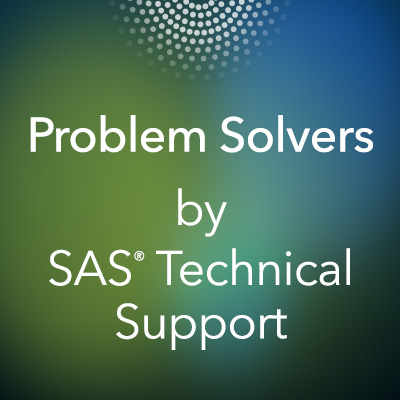How To Do Your First Data Science Hire Right: Data Scientist SASTraining Epoch Research Institute : EpochResearch Institute India Pvt Ltd. (SASAuthorised Training : Ahmedabad | Bangalore)
 |
| SAS Big DATA Science Analytic Training Epoch Research Institute |
 |
| SAS Training Epoch Reseach Institute Big Data Analytic |
How To Do Your First Data Science Hire Right
Most companies I talk to, from pre-product startups to Fortune
500s, are hiring data scientists. They see that data science and
machine intelligence will play a key role in the business and in their
products, so want to build a competitive advantage with data. If you’re
one of them, you may still wonder what kind of background a good candidate
should have, given that Data Scientist is a broad job title. You may also
realize that hiring a data science expert is extremely tough in this market.
The good
news is that you don’t need a team of Ph.D.s and statisticians to get started.
While working in this industry, I’ve seen many business start
their data science initiatives in a lean, cost-effective way by having
just one person and by using free, open-source software like mine. Some of
them even let a software engineer or a data analyst in their existing team to
take on the role.
What Should the First Hire Do?
If you’ve decided someone, what should you look for in this first
data scientist? I suggest finding someone who can establish the
following framework:
1.
Define a data problem
based on your business need;
2. Setup a software
platform to collect data from multiple sources. Conduct data sanity checks to
ensure there aren’t mistakes in the collection pipeline;
3.
Define an
evaluation measurement based on your business goal.
4.
Measure the
current business performance as a baseline;
5.
Understand the
domain knowledge and data of your business
6.
Implement the
first simple solution on a production system;
7.
Conduct A/B tests
with the evaluation measurement to compare the solution and the baseline.
Then
repeat steps six and seven with different solutions to improve results.
These
tasks are not rocket science. They at least don’t require Ph.D.-level theories.
Basically, your first hire helps get three things ready: 1) Your data; 2) A
clear problem to be solved; 3) A process to evaluate the business impact of any
new solution.
After
this framework is established, you might hire more data scientists or
bring in external consultants if you want to create more
sophisticated algorithms and solutions. The benefit of this process is that the
problem is now very clear and you have a way to evaluate their work.
Next,
when you are doing your initial interviewing, consider the following five
points:
1. Not every data problem is a big data problem.
Do not
mix up data science and big data. Millions of records is not a big data
problem. The data size of many small to medium size companies is small enough
to be processed by a single machine. While you want a data storage system that
is scalable for future growth, whether you need to analyze terabytes of data
efficiently today depends on your business. Some experienced data scientists
and engineers, especially those from tech giants like LinkedIn and Twitter,
specialize in large-scale data processing. Their impressive experience may not
be helpful to you if your data size is not that large, and they may not be
interested in your data problem anyway.
2. You cannot optimize what you cannot measure.
Whether
or not to build a data science team is an ROI question. You want to hire
someone who cares about evaluation — who wants to measure the impact of their
work on your business. Good candidates should be able to define the data
problems based directly on your business needs and be able to propose evaluation
methods for different data science approaches. They should care about
delivering measurable results; otherwise, you may spend months doing
something fancy but be left wondering if there was any business gain.
3. Domain knowledge is key.
Black-box
predictive solutions often don’t work well because every business is unique, so
their data is unique. A generic algorithm that doesn’t take domain knowledge
into consideration has its limits. Your data team should understand and make
use of your unique data to develop competitive advantages. Therefore, hire
someone who is eager to acquire domain knowledge about your industry and your
particular business by looking into your data.
4. Avoid solutions that are looking for problems.
Sometimes,
an expert who is too deep in certain approaches or research areas may have
a tendency to solve every problem the same way. This is not uncommon for
candidates who have spent years investigating a single algorithm. But when
you’re just starting out, you likely don’t know which methodology works
best for your business. You need someone who is interested in conducting
experiments and helping solve problems with the most suitable solutions. Look
for open-minded candidates.
5. Don’t be a perfectionist.
When you
have a prediction or optimization problem, don’t aim for perfect accuracy. It’s
not realistic. Instead, benchmark the data solution with what you currently
have. Quickly having a practical solution that improves your business is much
better than spending years chasing the impossible, perfect solution. For most
companies, especially small businesses and startups, becoming a research
lab isn’t a good idea.
It is
always better to start lean, but also start early. Happy to hear your own
experience in the comments.
By: Simon Chan is the CEO and Co-founder of PredictionIO,
Epoch Research Insitute Links:
Email us: info@epoch.co.in
SAS Training & Placement Programs with Internship: Epoch Research Institute India Largest and Oldest #SASTraining Institute (#epochsastraining)
EPOCH RESEARCH INSTITUTE OFFERS:
Authorized SAS TRAINING | SAS CERTIFICATION | SOFTWARE PURCHASE | BUINESS CONSULTING | TECHNICAL SUPPORT ON SAS || SAS STAFFING SOLUTION
Label:
#SASELEARNING,#SASELEARNING,#SASONLINETRAINING,
#SASONLINETRAININGFORBEGINNERS,#LEARNSASPROGRAMMINGONLINE,
#SASCLINICALONLINETRAINING,#SASBASEONLINETRAINING
#BIGDATASASTRAININGEPOCH,#SASBIGDATATRAINING #EPOCHRESEARCHINSTITUTE, #SASTRAINING, #EPOCH SAS FEEDBACK,
#CLINICALSASPROGRAMMING, #EPOCHCLINICALSASPROGRAMMING.
#CLINICALSASPROGRAMMING, #EPOCHCLINICALSASPROGRAMMING.

No comments:
Post a Comment